
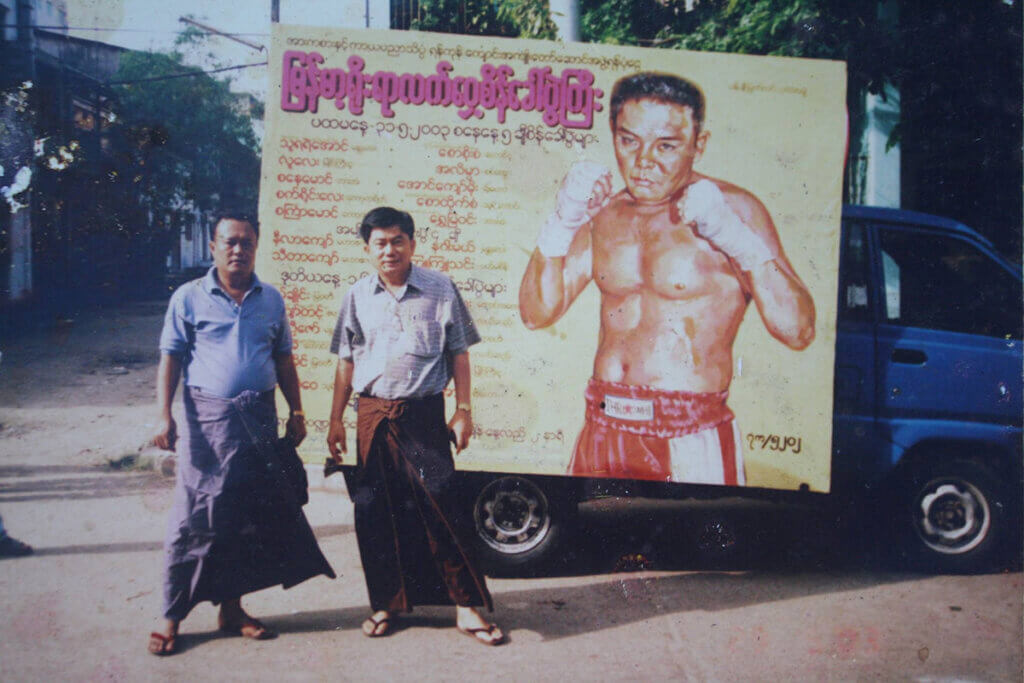
U Sai Zaw Zaw has been Lethwei’s top promoter since he entered the sporting arena close to three decades ago. He has organized and promoted well over 100 international and national fights, beginning with the historic 1993 challenge match between Shwe War Tun and Aung Aung Tun in Aung San Stadium. His innovation and success continued with the creation of the first Golden Belt Tournament in 1996. His vast international reach includes over 15 Myanmar vs. Thailand fight cards, two Myanmar vs. Japan fight cards, and one Myanmar vs. Philippines fight card. His other tournaments have included fighters from as far away as Russia, France, Iran, Switzerland, Mexico, Japan, England, New Zealand, and the United States.
He is currently on the Central Executive Committee for the Myanmar Lethwei Federation, and he is a Treasurer for the Myanmar Traditional Sports Federation, a Proprietor for the Zaw Pyi Taing Taung Video Production Company, and a Managing Director for Sai Zaw Zaw Lethwei Promotion. Finally, he is the Myanmar Representative for TKO Lethwei Equipment. In this role, he helps supply quality equipment for fighters, camps, and recreational enthusiasts.
U Sai Zaw Zaw currently resides in Yangon with his wife and two daughters.
Can you tell us about your early life before you got involved in Lethwei?
I went to college and earned a Bachelor of Science degree in Physics. After graduation, I went to work in film production as a production manager. My brother was involved in production, so I decided to follow him, as it was very interesting to me. But at the time, there was no video as of yet. I later started a small company as a video producer when the technology became available. That’s what I did primarily before I joined the Lethwei sector.
How did you become involved in Lethwei? Did you train in it? Or were you just a fan?
I have been a fan of Lethwei since I was young. I watched many fights. As far as martial arts, I trained in Karate for a long time, not Lethwei.

Each year, the Karen New Year fights are held in Yangon, as well as in the Karen State. At one particular Yangon New Year show, I got a chance to see many of the top fighters in action, like Tha Mann Kyar and many others. It was very exciting, and I wanted to get involved.
In 1991, I was hired by a tournament organizer to make a video of his Lethwei tournament. This became my entryway into the Lethwei sector.
The video releases at the time (on VHS, VCD, and eventually DVD) had peculiar, loud sound effects edited in, and slow motion with additional graphics to highlight the actual hits made by the fighters. They seemed to amplify the fights, much like what was being done in the Karate/Kung Fu movies of the time. Did you develop this? Or was this approach already in use?
This was already being used in earlier video releases, so we just did the same. We felt it was sort of an innovation to make people more interested and involved in the fights. During the live show, the announcer makes vocal sound effects, as well, to make the fights more exciting. It was an extension of that principle.
How did you become involved in finally promoting your own tournaments?
I continued covering the shows and making videos for the various Lethwei promoters. In 1993, a close friend encouraged me to organize an event on my own, and I decided to give it a try.
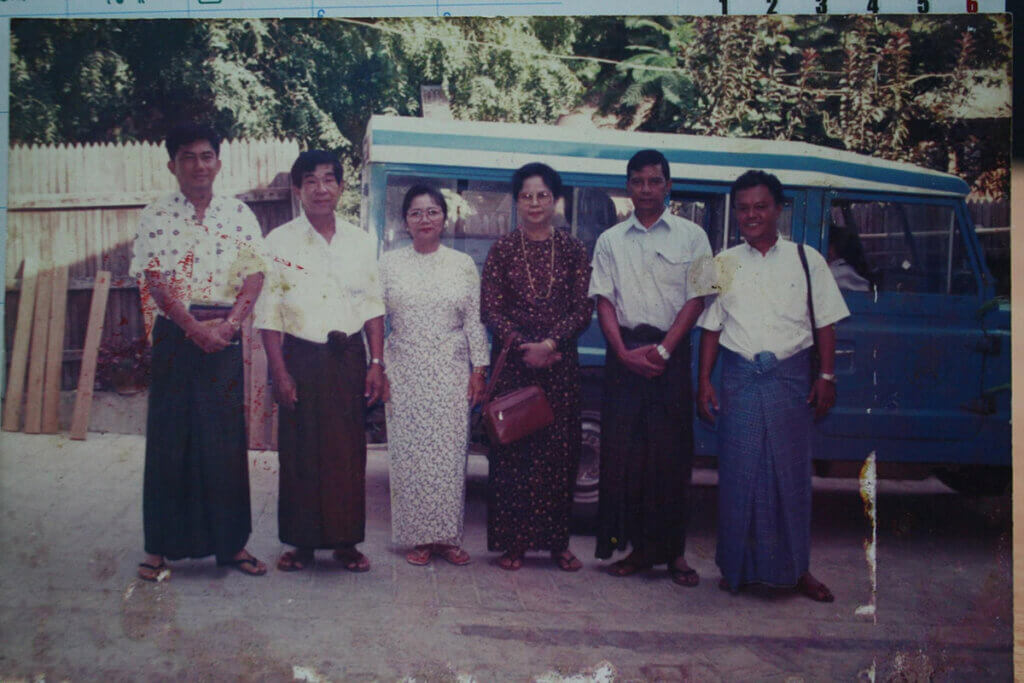
This was the big 1993 Challenge fight between Shwe War Tun (Thaton) and Aung Aung Tun (Mandalay) in Aung San Indoor Stadium in Yangon. How was it to jump into a big event for your first promotion?
It felt good. There was a lot of stress. It was the first Lethwei fight at Aung San Stadium. So, there was pressure, but I felt up to it.
At that time, Shwe War Tun was the free-weight champion. After that, Shwe Da Won beat Shwe War Tun to became the champion, just to put things into perspective.
The total cost of that fight was around 100K kyats. It was a reasonable amount to put up for such an important fight card with two great fighters. I had to give Shwe War Tun and Aung Aung Tun 30K kyats each for the fight. The entrance fee was 250 kyats. So, at the end of the day, I didn’t make a huge of profit, but there were no losses.
What about the problems you had promoting fights back then? In the 1990s, it was not an easy time; plus, you were moving from video production into promotion.
Let me identify two major problems. The first was you had to get permission from the authorities to organize a Lethwei event. The second was you had to secure permission to get the venue. At the time, there was no Ministry of Sports, so getting the venue was very difficult. We also wanted Aung San Stadium, which was the biggest venue at the time.

You produced the first Golden Belt tournament in 1996. You have done all of them, from 1996 through 2019 (outside of two that were done by U Soe Than Win). How did this unique tournament come about?
In 1994, the Myanmar Traditional Sports Federation was formed, and they planned to organize a fight card with weight categories and a point system in 1996. They agreed to a set of technical modifications that would update and modify Lethwei, so it could be fought in a format that was more marketable and universally accepted.
The development of the new tournament was technically led by U Win Zin Oo and U Maung Nyunt, who was then the General Secretary of the Myanmar Sports Federation. The tournament was eventually a joint effort by the Myanmar Traditional Sports Federation and me.
The first thing that was agreed upon was that the tournament would have point decisions. And the second thing was that it would have weight categories for the fighters. And the third and final thing was that there would only be one referee, instead of two (as in traditional tournaments).
The Federation invited promoters to see who wanted to be an operations leader to organize and promote the tournament. There was an auction held for that position, and I bid 100K kyats and won. That is how I came to be involved with the first Golden Belt tournament.
For me, the most important reason to organize the Golden Belt fights was to give a wide variety of fighters a chance to compete and generate some income. The fights are organized around the rainy season, when there are not many promotions, so it fills the gap to help the fighters who have fewer opportunities to compete at that time. Plus, it puts on an entertaining show during the low period of erratic weather. Many of the fighters from these tournaments develop into future champions and prominent competitors.
Over the years, the Golden Belt winners have gained much prestige and fame from winning the belt, as there is only one champion for each of the weight categories.
How hard was the tournament to put together once you won the bid?
There are nine weight categories in the tournament. The plan was to organize four fights on the first day, and maybe the next week or the next day to organize the remaining five fights. The unfortunate part was there was a political uprising, and instability in the country at the time, and I had to wait three months to get the chance to put on the second tournament.
For the first fight card, the first portion of four fights was held in November 1996, and, due to the disruption, I had to wait to organize the remaining fights in February 1997.
Going forward, the issues of political stability played a large part in getting the tournaments up and running. You will see wide gaps between the tournaments in the years before 2015. Additionally, once again, getting the necessary permission to organize the Golden Belt fights was difficult.
The tournament itself involves much more work to set up than a normal challenge fight card. You have to communicate with many of the Lethwei clubs all around Myanmar to coordinate the fighters. If you have a large pool of fighters, then you have to carefully make the matchups, then carry it through the semifinals and finals. This is on top of a lot of logistical and administrative problems that must be dealt with.
Is there going to be another Golden Belt Tournament in the near future?
I planned to do one in June, but it has been postponed due to the situation with the COVID global epidemic. I am hoping to get the tournaments going again before the end of the year if possible.
How about organizing fights like Myanmar vs. Thailand? Or any of the other international cards?
The workload associated with the Golden Belt fights is at times overwhelming because of the number of fighters, coaches, managers and clubs involved.
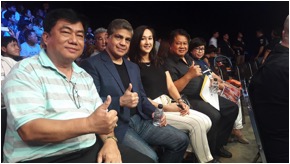
The challenge with the international fights is different. The visas were initially the hardest part during the earlier promotions with the Thai fighters. For example, organizing a fight with American fighters back then was very difficult. Even when you solved the visa problems, you still had to deal with the authorities, and the audience, who can be extremely vocal and critical of the outcome. The authorities would always demand to know who was going to win. Sometimes they said, “If they aren’t going to win, then why bother with the tournament?”
However, if the fight looked like an easy win for the Burmese, they said, “You brought in low-level Thai fighters.” And if the Thai fighter won, then they said, “You are a traitor for letting this happen, and you are degrading the country.” The outcry could be outlandish and often ridiculous.
I just had to resist this type of pressure and organize a good fight card that was even and well fought. I put on the best shows that I could, and, as for the criticism, it is what it is.
What’s the secret to promoting? It seems like you’ve got to have a lot of skill to promote in Myanmar.
I am very detail-oriented. I do as much as I can myself, instead of delegating important details to my assistants. They are, of course, important, but I personally oversee everything. I meticulously calculate the expenses and profit potential, along with a careful margin of error. My past experience really helps me sort out any problems that come up during the course of the promotion.
What about cultivating important relationships with officials, and key people in major organizations?
That is important to what I do. I contribute as much as I can to the community. I was Chairman of the Lethwei Committee (Yangon Division) for several years, as well as the General Secretary for the Myanmar Traditional Boxing Federation. I am serving these organizations internally, while cultivating important relationships that will, in turn, help make my promotions run smoothly.
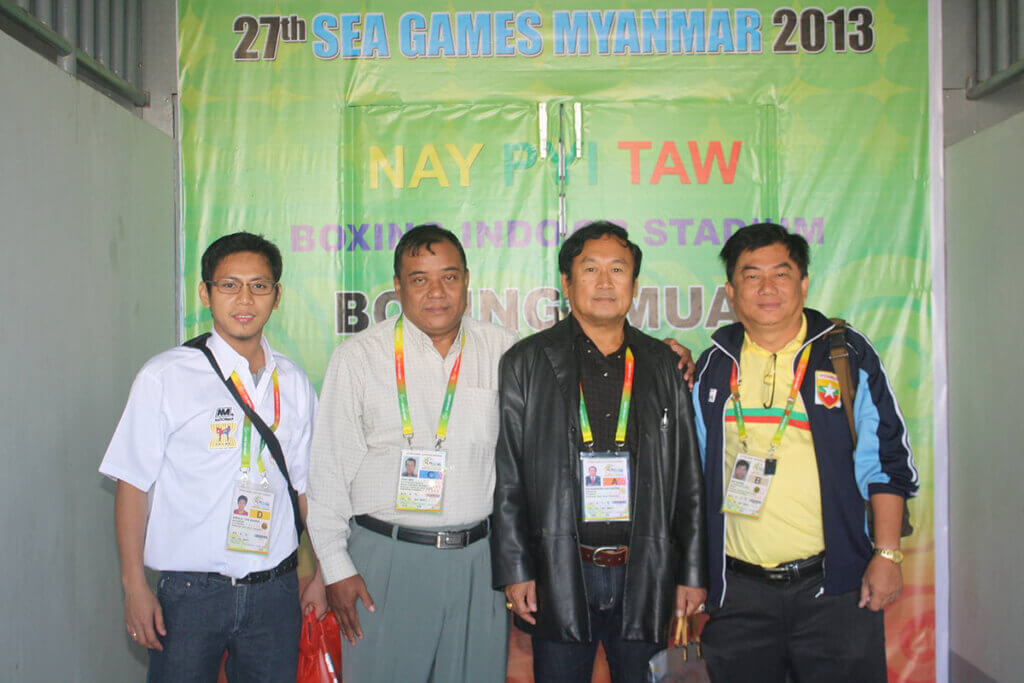
For example, I was asked to help with the last SEA Games that was organized in Myanmar in 2013. The government really wanted to have a strong showing and win key medals in the competition. I had to contribute a lot of my time and money to help build a formidable team of athletes that could hopefully win medals in the games. This took close to a year and a half of my life to get done.
Can you talk about what things were like after the opening of the country in 2011, and how that impacted the sport?
It’s much easier now, compared to the earlier times. I remember the Myanmar vs. Japan fight, for example. At that time, there was no Ministry of Sports yet. The governing authorities asked for 8.4M kyats for the fight, which was a lot of money.
I had to make an appeal to attempt to reduce the upfront costs. The authorities replied, “If it is too much, then don’t organize the the fight.”
But to answer your question, the costs have come down considerably since then, and, because of the current stability of the country, we have organized many more shows. The policies change, though, so costs will rise and fall, depending on the situation.
What were the toughest shows to do? Were they the Golden Belt ones?
The hardest and most energy-consuming are the Golden Belt fights. They are the most expensive, as well, because of the number of people involved.
Did you ever suffer a huge financial loss from a tournament?
Yes. It was a tournament that I did I think in 2014 that featured a fight between a Myanmar fighter and an American. The loss was around 14M kyats.
The reason for this was there was a lot of interest in the fight from people all over the country, and they wanted it to be televised live. So, I had to negotiate the broadcasting rights for the show, and I wound up giving it to them for free because I anticipated a huge turnout. But because it was televised for free, the audience stayed home and watched the fights on television instead. I wound up with an empty arena, and a big financial loss.
What about televising your shows and utilizing the internet and streaming services for your current and past shows?
We have a deal currently with Canal+ to broadcast our shows so that has helped tremendously. I do have an archive of old shows that I am hoping to get online at some point in the future, in partnership with another company. I am exploring many different avenues to get our shows to the widest audience possible.
Who are some of your favorite fighters, past or present?
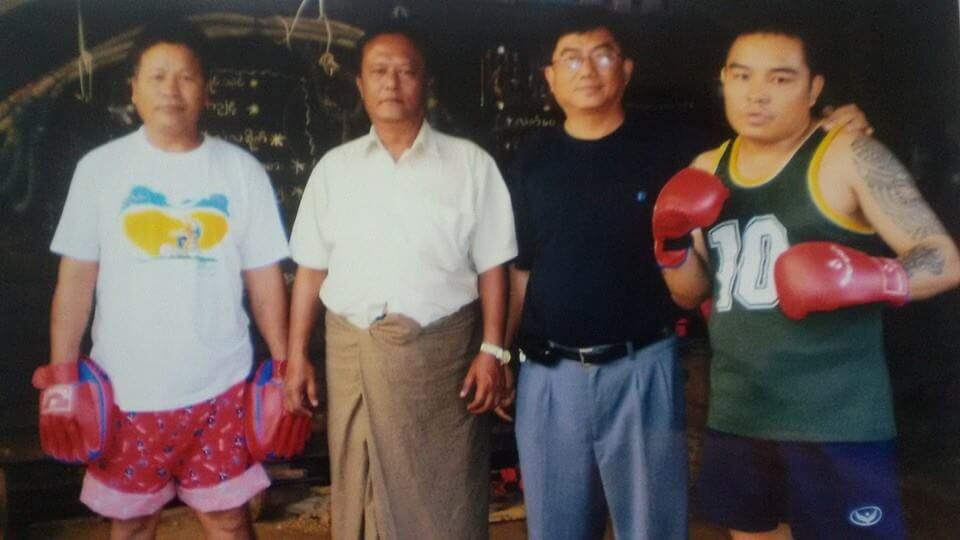
Tway Ma Shaung, Shwe Du Won, and Wan Chai are my personal favorites.
Can you discuss the last year or so for you, and what is coming up?
Last year was one of my biggest years ever. I organized and promoted over 23 Lethwei shows from Yangon to Pa-an, and from Mawlamyine to Myitkyina, and all through Myanmar. Instead of organizing big events with famous fighters, I focused on developing a broad base of fighters and giving them a chance to earn money and display their skills. That way, we got a sneak peek at possible future champions and gave them the incentive to keep pushing forward and competing as much as they could.
As we discussed previously, I intend to keep the Golden Belt tournaments going into the future. I want to draw the audience in with top-notch fighters and strong matchups.
One major problem for our fighters and camps was a huge training equipment shortage in Myanmar (as we don’t manufacture any equipment here at this time), so I became a TKO distributor and created the TKO Myanmar Lethwei brand to help bring quality equipment into the country. This will help tremendously and give top-notch training equipment to anyone who needs it.
My commitment to Lethwei has only grown stronger over the years. I see a very positive future for the sport, and I will do my best to promote and support the growth of Lethwei in every way possible.
© 2020, Vincent Giordano. Unauthorized use and/or duplication of this material without the express and written permission of the author is strictly prohibited.

Leave a Reply
You must be logged in to post a comment.